Ideal Hydroponic System: Curious about growing plants more efficiently? With a Hydroponic System, you bypass traditional soil gardening and dive into a world where plants thrive in nutrient-rich water. This guide breaks down the different hydroponic setups, from beginner-friendly techniques to more advanced methods, and shows you just how simple and rewarding hydroponic gardening can be.
Hydroponics is a soilless gardening system that accelerates plant growth by 20% and increases yield by at least 25% due to efficient access to water, oxygen, and nutrients; it is essential to maintain these systems by regularly adjusting water levels and nutrients, and managing costs associated with lighting and operation.
There are multiple hydroponic methods, including wick, deep water culture, ebb and flow, drip, nutrient film technique, and aeroponic, each suitable for different plant types and growth requirements; choosing the right method depends on factors like cost, plant species, and gardener’s proficiency.
Successful hydroponic gardening requires selecting appropriate growing mediums, air stones, and water pumps and performing regular maintenance checks for light, water, nutrients, pH, and temperature while also being prepared to troubleshoot common issues like nutrient imbalances, pests, and root rot.
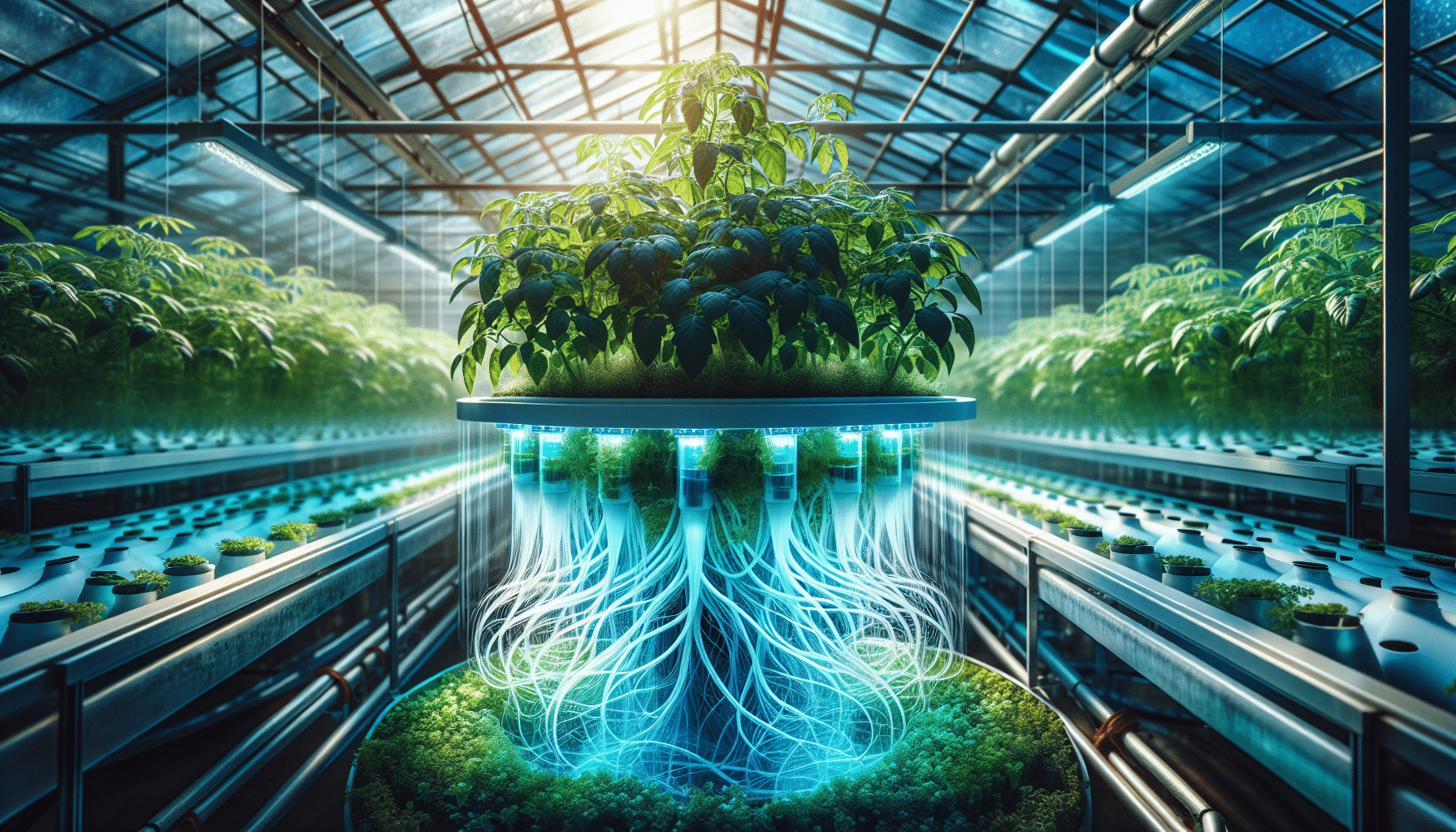
Hydroponic systems revolutionize gardening practices by offering a soilless approach to growing plants. These setups utilize nutrient-rich solutions and provide an optimal controlled environment for plant growth, resulting in at least 20% faster growth rate and 25% higher yield compared to traditional soil gardening methods.
This is due to the elimination of barriers between roots and essential elements like water, oxygen, and nutrients that are crucial for their development.
To ensure the efficiency and proper maintenance of hydroponic systems, such as the deep water culture system, some operational considerations should be taken into account. These include maximizing space by building frames or using adjustable wire shelves, regularly topping off the water supply for consistent nutrient availability, and changing the solution frequently to promote healthy plant growth while also ensuring food safety measures.
However, the initial cost investment must be considered when setting up a hydroponic system, along with ongoing expenses related to running lighting equipment daily, such as those involved in operating a deepwater culture system that involves continuous indoor light exposure.
However, this method proves its worth in terms of increased productivity and ease of care compared to typical soil-based gardening techniques.
Hydroponic gardening is a technique for cultivating plants without soil, using water, nutrients, and suitable growing media to support their growth. Containers made of food-safe materials that can hold water are ideal for a complete hydroponic system.
Different types of growing media can be utilized in hydroponics, including coconut coir, which has excellent qualities such as retaining moisture and providing aeration, making it suitable especially in flood and drain or wick systems.
Vermiculite, on the other hand, has good capabilities with both retention of moisture and creating air pockets within its particles, although, over time, it may compact if not properly managed. Another lightweight alternative medium known as perlite provides great amounts of oxygen essential for creating an optimal root environment.
It does have shortcomings when trying to keep constant levels of humidity internally compared to others like Rockwool (made from volcanic rocks) commonly used during seed starting due to their unique benefits combination such as high saturation abilities paired up with proper ventilation processes.
Each type serves different purposes depending on what kind you prefer based primarily on your preferences combined along with specific system requirements where characteristics justifying our decisions greatly vary accordingly. The properties possessed by each one allow us users flexibility, assuring longevity usage that corresponds more towards promoting this highly effective agricultural method today.
The effectiveness of hydroponic systems relies heavily on the nutrient solutions they utilize, which are carefully crafted to supply plants with a balanced mix of essential nutrients for optimal growth and well-being.
An important aspect of maintaining healthy plant growth is maintaining appropriate pH levels within the nutrient solution. It is recommended that hydroponic plants thrive within a pH range between 5.4 and 7 as this ensures the availability of nutrients and proper absorption by their roots.
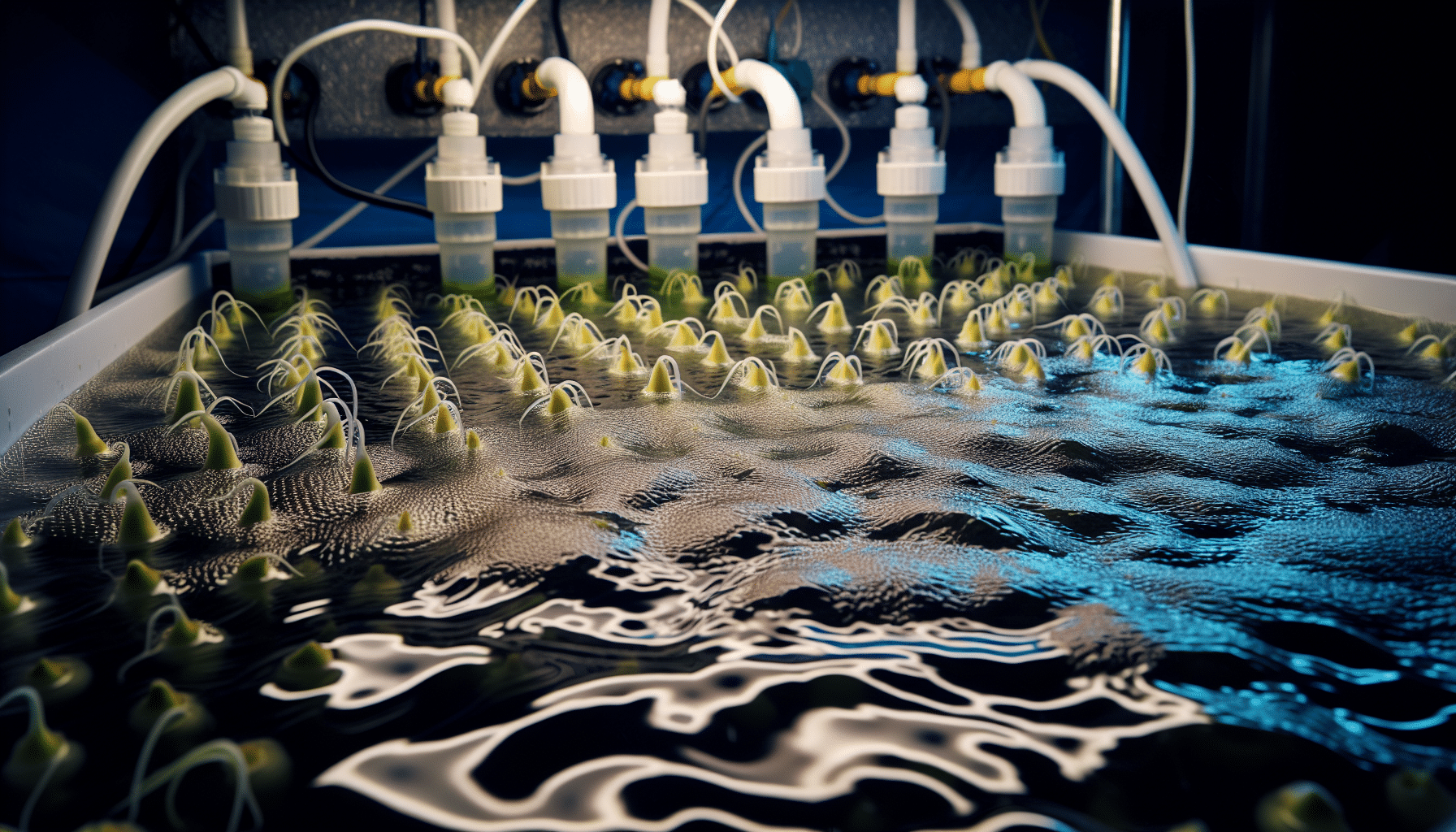
There are several types of hydroponic system available, each with its advantages and disadvantages. These systems all fall under six main methods: wick, water culture, ebb, and flow (flood & drain), drip (recovery or non-recovery), nutrient film technique (NFT), and aeroponic.
For example, the wick system operates passively, using a wick to transfer the necessary nutrients from a reservoir to the growing media surrounding the roots of plants. This system has its benefits as it:
Does not rely on mechanical parts, making it ideal for areas without reliable electricity
Is simple to set up at an affordable cost
Works well for small-scale or home gardening
However, the slower speed may limit the number of plants that can be successfully grown using this method.
Each hydroponic system relies on different techniques, such as providing nutrients through solutions like nutrient films that use flowing channels, and others simply submerge plant roots into solution-containing containers. The conditions created by these specialized processes enable more efficient growth than traditional soil-based cultivation.
One popular choice for hydroponic gardeners is the Deep Water Culture (DWC) system, which involves a reservoir filled with nutrient solution and utilizes air pumps to oxygenate the water. This fosters optimal root development for plants, resulting in impressive results. Setting up a DWC system at home is simple and can be done by following these steps.
To hold the nutrient solution in your homemade DWC system, you can use either a clean bucket or an old aquarium. On top of this container, place something like styrofoam that will float on the surface and support net pots containing your plant’s roots. It is important to only submerge about an inch and a half of the roots in order to promote proper growth without risking drowning them under too much water.
For successful root development using deep water culture systems, it is crucial to have ample amounts of oxygen circulating through the nutrient solution. To achieve this circulation effect within your doc setup, position an air stone connected to an air pump at its bottom. This process helps maintain adequate levels of dissolved oxygen while also preventing any potential damage from excessive exposure underwater. Combined with regularly monitored nutrients, the constant flow created allows hydroponic gardening enthusiasts favorable outcomes overall.
Ebb and flow hydroponic systems, also known as flood and drain or flow systems, function by flooding a grow bed with nutrient solution from a reservoir below. The solution is then drained back into the reservoir using gravity-assisted drainage and controlled by a water pump and timer.
An air pump with an air stone is used to ensure proper oxygenation of the solution in the reservoir.
These flexible ebb and flow hydroponic systems are highly efficient in providing plants with essential nutrients for accelerated growth while also ensuring they receive enough oxygen. They can accommodate various types of plants depending on their size since depth considerations need to be taken into account when choosing a suitable grow tray. This popular method of cultivating crops includes tomatoes, peas, beans, cucumbers, and peppers among others.
The nutrient Film Technique (NFT) is a hydroponic method that provides plants with a continuous flow of nutrient solution, allowing them to absorb nutrients without being completely submerged in water.
In NFT systems, the channels holding the plants are tilted so that water can run down their length before draining back into the reservoir. This ensures efficient nourishment for the plants by continuously recycling and aerating the nutrient-rich water through submersible pumps at regular intervals. It is recommended to drain and replenish this solution weekly.
The main process involved in NFT involves tilting grow trays where plant roots receive continual exposure to flowing nutrient film while staying above ground level. Thus not causing any direct immersion or over-watering effect on these delicate structures.
The operating mechanism includes using adequately oxygenated circulating motors for enhanced propagation of healthy root systems throughout all stages until harvest time arrives.
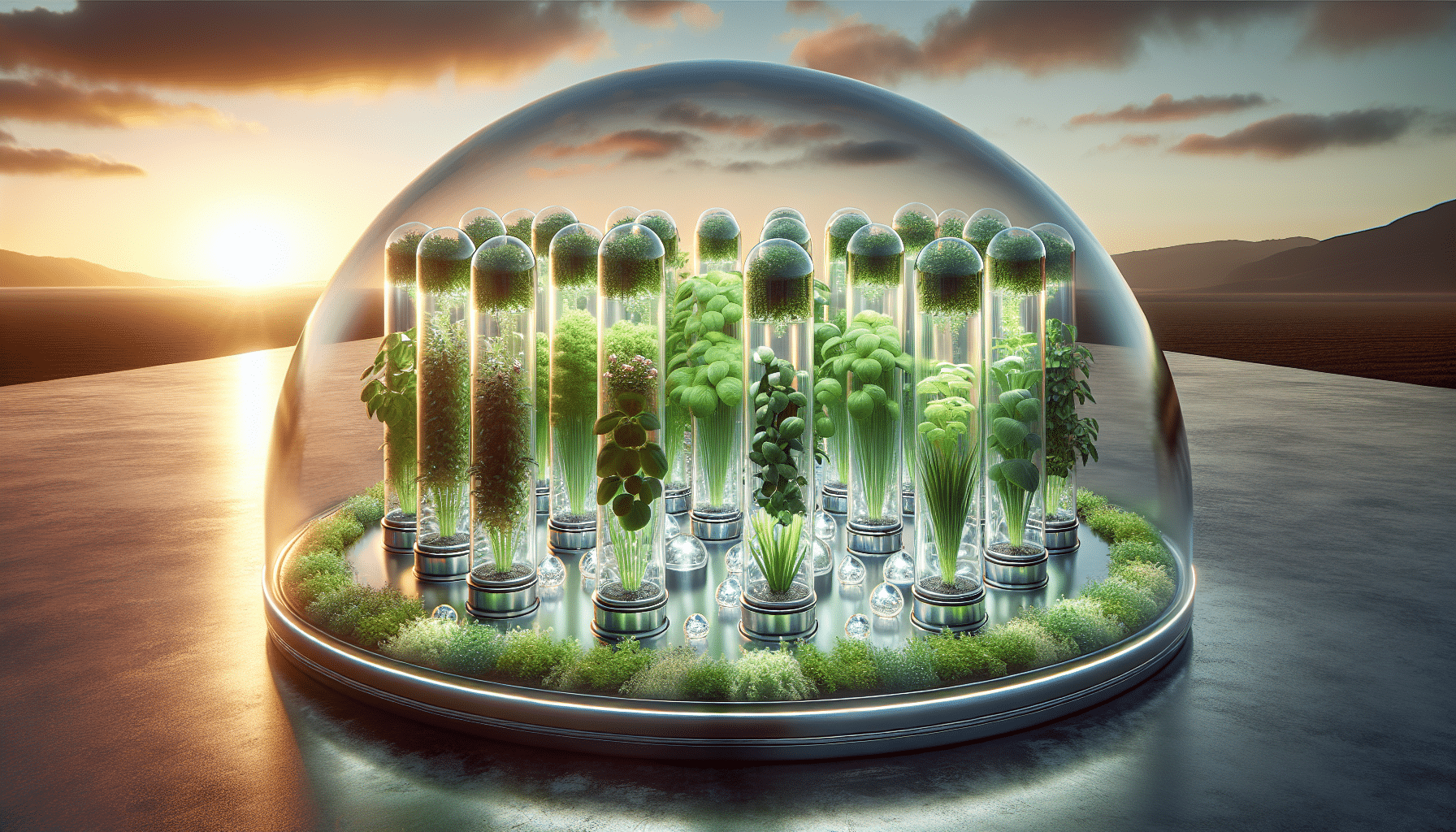
Designing your hydroponic garden involves carefully selecting the right components to ensure successful plant growth. This includes choosing a suitable growing medium, air stones, and water pumps for optimal nutrient uptake by the plants. Various options for growing mediums include rock wool, peat pellets, coir pellets, cigarette filter inserts, cotton balls, dirt, perlite, and vermiculite.
When deciding on which air stones to use in your hydroponic system, it’s important to take into account their size so that you can determine the appropriate number of air stones needed. Air stones are crucial as they help aerate the nutrient solution which ultimately improves plant growth potential.
The selection process for a water pump should also consider factors such as system size, the required flow rate of water consumption, power usage, the level of noise produced, and how high up it needs to be able to pump nutrients. This ensures proper functioning and efficiency within the overall hydroponic setup.
Carefully choosing the appropriate growing medium is essential for successful hydroponic gardening. The primary function of a growing medium is to support plant roots by providing moisture and oxygen.
Different types of mediums have distinct characteristics that can greatly affect the overall growth process, such as water retention, aeration properties, drainage capabilities, weight distribution, and pH levels.
In hydroponics, selecting the right type of growing medium plays a significant role in ensuring optimal conditions for plants. Each type has its unique qualities that contribute to root development and maintaining an ideal balance between water and air content.
Some commonly used media are peat moss with excellent water absorption abilities, vermiculite, which expands when heated, and coconut coir, renowned for retaining moisture. And perlite known for promoting good air circulation.
Furthermore, it is a violation of the law.
Among these options, there is also rockwool, which excels at absorbing water.
Hydroton-expanded clay pellets and regular clay pellets provide efficient draining capacity.
Other common mediums like coconut coir, peat moss, or perlite are often utilized in hydroponics settings.
In hydroponic systems, air stones and water pumps play a vital role in ensuring the proper oxygenation and circulation of nutrient solutions. They help deliver oxygen to the reservoir and circulate it to the plant roots.
It is recommended to keep air stones and water pumps running at all times in Water Culture setups, while other systems such as Ebb & Flow, Drip, and NFT may require them for 12-24 hours daily.
For best results in hydroponic gardening, disc-shaped air stones are highly recommended. Some reputable brands known for their reliable air pump options include General Hydroponics.
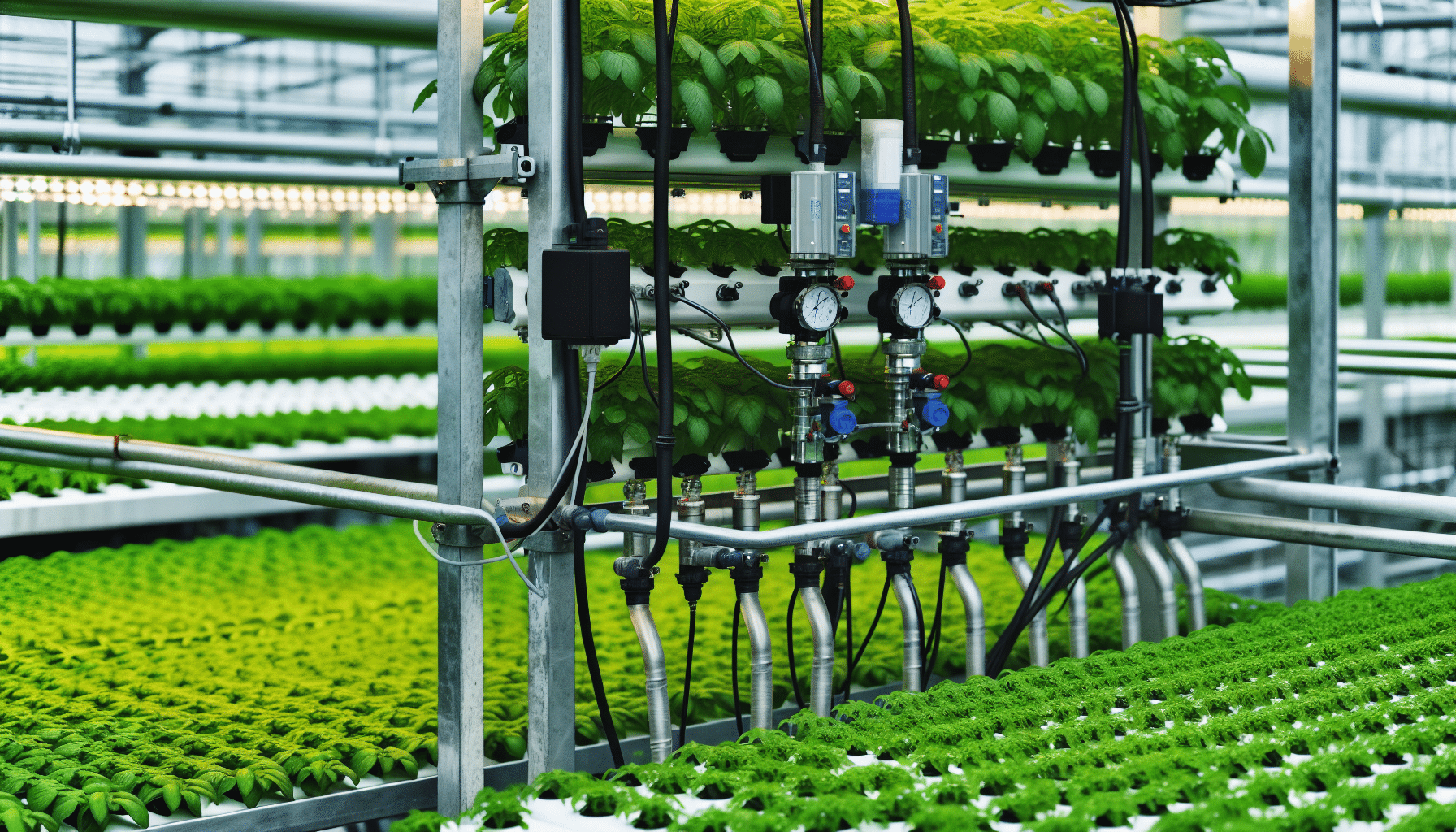
Advanced hydroponic techniques, such as large-scale drip systems and aeroponic systems, can be highly advantageous for commercial growers looking to increase yield.
Large-scale drip systems offer maximum control over water flow through the use of advanced timers and also reduce run-off, ultimately saving time while potentially increasing crop output and improving quality.
Despite their benefits, these types of systems may encounter challenges like clogging from recycled nutrient solutions, causing blockages. A substantial investment is required to implement drip irrigation on a larger scale.
Aeroponic systems utilize misted nutrient solutions to nourish plant roots suspended in the air, leading to quick growth and reduced water consumption, making them unique options for commercial growing operations that prioritize efficiency.
In conclusion,
Both large-scale dripping systems with sophisticated timer controls and innovative aeroponic systems suspending plants in mid-air with a regular supply of nutrient solution via gentlemen differ significantly but both hold immense value for commercial farmers who want to prioritize yield maximization without sacrificing the quality of their crops.
Factors like potential run-offs, time-saving opportunities, and higher productivity make these hydroponic tools attractive options for maximizing profits through sustainable growing practices.
Drip systems are widely favored in hydroponics, particularly among commercial growers, because of their efficiency and precise nutrient delivery capability. These systems come in two configurations: recovery and non-recovery, each with its own method of managing excess water and nutrient solution.
In recovery drip systems, growers should regularly monitor and adjust the nutrient solution reservoir to address pH and nutrient fluctuations. It’s also vital to prevent oversaturation of the growing media, which may necessitate periodic washing and replacement.
Non-recovery drip systems, on the other hand, use elaborate timers and feeding schedules to ensure precise nutrient delivery and minimize waste.
In recent years, there have been significant improvements in plant productivity thanks to the advancement of aeroponic systems. These advancements include High-Pressure Aeroponics (HPA), sensor and monitoring integration by Bifarm Tech, as well as ultrasonic technology utilization for aeroponics introduced by Nutraponics.
Compared to simpler systems such as deep water culture, these enhancements allow for faster plant growth while also reducing water usage. This is due to the precise delivery of nutrient aerosol directly to the roots in modern aeroponic techniques which result in increased crop productivity compared to hydroponic cultivation methods.
High-pressure misting systems are now being used as a backup nutrition and emergency source of water if system failure occurs – acting almost like a “crop saver” with its efficient use of nutrients and customizable settings provided by sensors and monitoring tools from companies like Bifarm Tech or utilizing new technologies developed at LettUs Grow.
Unsurprisingly, aeroponic farming is quickly becoming popular among growers seeking higher yields with minimal resource consumption.
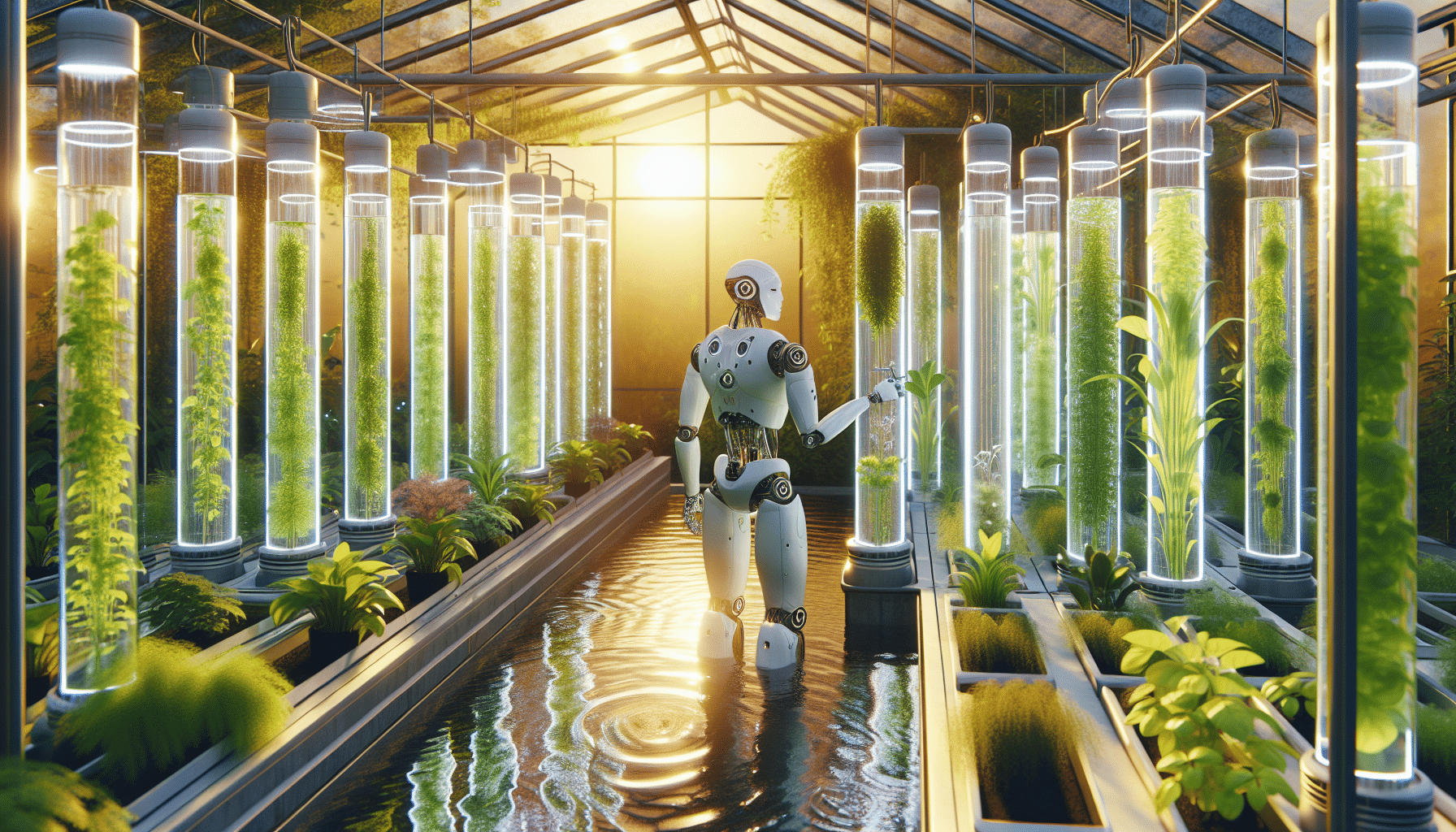
Effective upkeep and problem-solving are crucial for a flourishing hydroponic garden. The recommended temperature range for optimal growth in hydroponic systems is typically 18-25 degrees Celsius (59-86°F), although this may vary depending on the specific growing conditions. It’s also advised to replace the nutrient solution within a hydroponic system every two to three weeks.
To maintain favorable conditions, it is essential to be vigilant of potential risks that can arise in these systems. Some common pathogens found in hydroponics include powdery mildew, downy mildew, and root rots.
Regular maintenance routines for hydroponic systems should include daily or every other day inspections to ensure that plants are receiving sufficient light, proper water levels, and correct nutrient levels. It is essential to monitor these factors regularly to prevent any nutrient deficiencies or excesses that could negatively affect plant health and yield.
Using a digital pH meter is the most effective way of determining the pH level in a hydroponic system. To adjust these levels correctly, it is recommended to use products specifically designed for this purpose when working with hydroponic nutrient solutions.
To control temperature effectively in a hydroponic garden, there are several methods available, such as using heaters or chillers, adding ice packs into the reservoirs, keeping them shaded from direct sunlight, or applying white spray paint on their surface.
It is not uncommon for issues to arise when cultivating plants hydroponically.
One common problem that can occur is nutrient imbalances, which can be identified by closely observing specific symptoms in the plant such as burnt or blackened edges on leaves, yellowing or browning of foliage, and stunted growth.
Pests are also a concern in a hydroponic garden, and their presence may be indicated through colonies of aphids found on new stems and leaves as well as thrips located on the underside of plant foliage.
Dealing with root rot – another commonly encountered issue – involves several steps, including cleaning, sanitizing, and inspecting the system, incorporating bio fungicides, ensuring proper oxygenation of the nutrient solution, regular water changes, avoiding disruption to the roots’ growth pattern, limiting light exposure to them, controlling temperature levels, especially in DWC systems, and sterilizing roots using hydrogen peroxide (3%).
The wide range of plants that can be grown using hydroponic techniques is one of its greatest advantages. Popular choices for hydroponic cultivation include lettuce, herbs, bok choy, celery, chard, tomatoes, and various types of peppers and cucumbers. These plants have varying nutrient requirements consisting of essential macronutrients such as nitrogen and phosphorus as well as micronutrients like iron.
In contrast to traditional soil-based gardening methods, where nutrients are absorbed through the roots from surrounding soil or fertilizers spread on topsoil, the process in hydroponics involves directly supplying water and food to the plant’s root system.
This allows for efficient utilization of nutrients while eliminating the need for a large root system, which would otherwise have been necessary to search out vital resources such as water and minerals.
Whether you’re looking at growing small quantities of fresh herbs indoors or planning on setting up a commercial operation producing an assortment of vegetables year-round with minimal space requirements, the versatility offered by utilizing hydroponics cannot be ignored.
Furthermore, this method enables gardeners and farmers alike to grow their chosen crops with precision nutrition tailored specifically to their suitability for successful growth in this controlled environment. It comes highly recommended, not only due to account of factors but ultimately delivering time-proven results achieved so far. And yield products are proving sustainable, too!
The physical size of the area available, the specific type of hydroponic system utilized, and the overall dimensions of plants can all impact how many crops can be grown within a given hydroponic garden. By increasing plant density and enabling higher yields in a smaller space, different types of hydroponics systems may affect crop capacity.
Additionally, the absorption rate for nutrients as well as the flow within the system are influenced by plant size which affects productivity potential. Because each individual’s unique circumstances vary, it is necessary to take into account factors such as the amount of usable space, type of hydroponic system, and choice of sized plants when planning your own particular hybrid gardening setup.
Selecting appropriate plants for hydroponic gardening involves considering elements like growth patterns, nutrient needs, and compatibility with the chosen system. Some ideal choices that possess specific traits conducive to hydroponics include leafy greens, herbs such as mint and basil, tomatoes, strawberries, lettuce, and cannabis.
However, some types of vegetation are not suitable for a thriving harvest in a hydroponic garden due to their need for ample space or unique root structures. These may comprise vines, trees, and crops grown underground like onions, potatoes, and carrots.
Therefore, it’s essential to thoroughly research potential plant options before beginning your hydroponic setup. Making informed decisions will help ensure maximum success and productivity within your hydrological ecosystem.
When it comes to selecting plants well-suited for hydroponic cultivation, the key is choosing those that can thrive without soil or traditional growing conditions. Optimal choices include leafy greens (such as kale and spinach), herbs (like parsley and mint) as well as larger fruits such as tomatoes, peppers, and strawberries, among others. Selecting the right assortment of these highly productive plants is integral to achieving successful results in an indoor garden.
In summary, before establishing a successful hydroponic garden, it is important to carefully select plants that possess the ideal characteristics for this unique growing method. Avoiding vines, trees, or root vegetables, and opting instead for options like leafy greens, herbs, and fruit-bearing plants, is key to achieving optimal results. With proper research and careful selection, you can ensure a thriving hydroponic garden.
In summary, hydroponics is a revolutionary method of farming that caters to both enthusiasts and commercial growers. With the elimination of soil, this technique allows for faster plant growth, increased yields, and optimal use of resources. Whether you’re planning on setting up a small personal garden or embarking on a large-scale agricultural venture, it’s essential to have an understanding of hydroponic systems basics as well as routine maintenance practices to troubleshoot common problems effectively. So why not take advantage of this futuristic gardening approach and explore the endless possibilities of hydroponics?
The easiest hydroponic system for beginners is Deep Water Culture (DWC), where plants grow with their roots submerged directly in nutrient-rich water, typically achieved in large opaque storage containers or buckets.
Hydroponic systems, namely wicking, deep water culture (DWC), and nutrient film technique (NFT), are often utilized for soil-less gardening purposes.
They provide alternative means of growing plants without traditional soil. NFT utilizes a thin layer of nutrients to nourish the plant’s roots while DWC involves submerging the root system in a reservoir.
One of the primary drawbacks of hydroponics is its costly initial investment, regardless of whether you are implementing a large-scale or small-scale system. There is a significant risk for waterborne diseases that can greatly impact the overall yield and health of plants in this type of setup.
Hydroponic systems provide an efficient method for plants to thrive, resulting in increased growth and higher yields compared to traditional soil gardening. This is due to the optimized provision of crucial elements such as water, oxygen, and nutrients.
There are six fundamental hydroponic systems available, including wick, water culture, ebb and flow, drip irrigation, nutrient film technique (NFT), and aeroponic. Each system has its distinct approach to providing nutrients to plants.
Grow 100 planting sites, monitor ph levels, water temperature, water levels, and control light and water cycles.
© Copyright 2024 Nutraponics. All Rights Reserved.